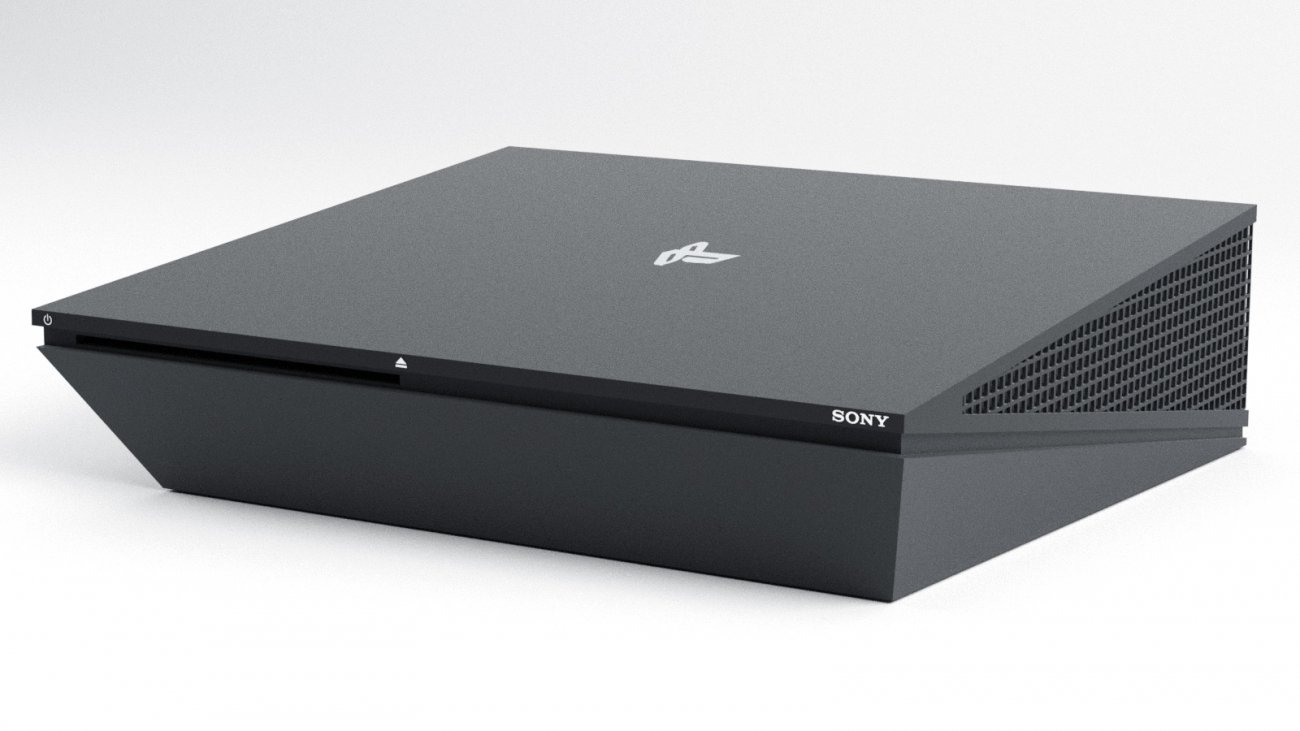thicc_girls_are_teh_best
Member

(If you're interested, please give PS6 Part 1 a read).
Continuing from the 1st part on PS6 speculation, since the GPU was covered, this time I'm gonna wrap everything up with the CPU, memory, storage, audio, business strategy, and pricing, cross-posting from the post on B3D. I tried keeping things trimmed down this time since, well, that has been a recurring thing that's needed to be focused on. But still gonna keep everything as tight as before.


[PLAYSTATION 6]
[CPU]
[FEATURES]
>Two CPU chiplet blocks; technically Zen can be called a chiplet, but what would be going on here is literally more like two CPU dies closely integrated together to function like a single CPU block.
>The two CPU chiplets are the "High Power" and "Low Power" blocks.
>"High Power" block and "Low Power" blocks have the same core and thread counts: 8 cores, 16 threads. However, the "High Power" block has more on-chip cache and some processor feature support not present in the Low Power block .
>"Low Power" block can be clocked a bit higher than the "High Power" block for asynchronous CPU-bound workloads.
>"High Power" and "Low Power" blocks are managed through a shared scheduler.
>The scheduler enforces Heterogeneous Multi-Processing (HMP).
>Dynamic prioritization and organization of workloads with dual-block design means one or the other blocks can be powered down to save on power consumption when not required for work.
>Shared high-speed, low-latency L4$.
>ARCHITECTURE: ZEN_ARM Nth-Generation
>1x 8C/16T "High-Power CPU" block, 4.2 GHz
>1x 8C/16T "Low-Power CPU" block, 5 GHz
[CACHES]
>L1$: 128 KB (per core, HP block), 64 Kb (per core, LP block) 1.536 MB (total)
>L2$: 512 KB (per core, HP block),256 KB (per core, LP block), 6.144 MB (total)
>L3$: 8 MB (HP block), 8 MB (LP block), 16 MB (total)
>L4$: 8 MB (shared)
>>TOTAL: 31.68 MB
[MEMORY]
>GDDR-based (GDDR7).
>2nd or 3rd generation GDDR7 with higher bandwidths (36 Gbps).
>144 GB/s module bandwidths.
>4 GB module densities.
>256-bit memory bus (8 modules).
>1.152 TB/s system memory bandwidth.
>Additional 2 GB of LPDDR5 present for OS-related tasks and SSD I/O related temp caching, 51.2 GB/s bandwidth.
[STORAGE]
>NAND-based. NAND technology will continue to improve on latency and bandwidth, and reduce in price per GB. Persistent memory will not become a suitable alternative for storage options but can likely see use as off-chip cache in smaller MB or low GB capacities.
>More standardized NVMe-based internal drive that should allow for much easier expandability and replaceability; in turn system OS files are stored on separate block of NAND embedded on the system board, intended for OS file changes and updates/backup states, security files etc. Saves on required space of storage drive for formatting and hosting reserve space for OS features.
>PCIe 5.0 interconnect; some features from PCIe 6.0, such as FEC (forward error correction) support, will be enforced through custom implementation at hardware level by Sony.
>8x PCIe 5.0 lanes, for up to 32 GB/s raw bandwidths.
>16x 1-channel, 256 GB NAND modules, for 4 TB storage and 16-channel interface.
>Internal FMC (Flash Memory Controller) for the storage, paired with internal FMC in the PS6 for data comms.
>Enforced implementation of CCX cache coherence with dedicated hardware to handle overhead, on both FMCs.
>Advanced decompression system as evolution of PS5s, with improved maximized compression ratio of 5.5:1.
>Compressed bandwidth of 176 GB/s (8x increase over PS5's 22 GB/s peak, and same bandwidth as PS4's GDDR5 memory).
>PS5 internal flash memory controller can support.
>Unlike PS5, internal SSD and any expansion SSD share the same slot; transfer of data from internal default SSD to an expansion external SSD will require an intermediary external SSD or HDD to act as a middleman.
[AUDIO]
>Tempest Engine Audio Next (TEAN).
>Repurposed dual CU unit from PS6 GPU.
>Clock rate set lower than GPU, at around 1.849 GHz (55% of base GPU clock rate).
>~946.8 GFLOPs of theoretical performance capability.
>Expanded programmability options compared to PS5's Tempest Engine.
>Complementary general-purpose DSP for additional lower-performance audio tasks present, integrated into TEAN.
[PLAYSTATION LITE AND PLAYSTATION FOLD 2]
>Mid-tier and entry next-generation PlayStation products to compliment PS6 (high-end).
>PlayStation Lite is a refresh/replacement for the PS5 Enhanced and PS5; PlayStation Fold 2 is a replacement for the PS4 Pro and PS4.
>Both PS Lite and PS Fold allow fluid streaming of PS6 games; PS Fold 2 allows fluid streaming of PS5 & PS5 Enhanced games.
>Small console form-factor for PS Lite; portable form-factor for PS Fold 2.
>Both systems leverage the "Low Power" CPU block from the PS6, and one of the two GPU chiplets.
>"Low Power" CPU block in both is clocked lower to match CPU clocks of systems they replace (but can likely provide slightly more).
>GPU chiplets, similarly, are clocked lower to match the GPU clocks of systems they replace (but can likely provide slightly more).
>PS Lite features 8x 2 GB GDDR7 modules at rates of 24 Gbps (96 GB/s), for 16 GB @ 768 GB/s.
>PS Fold 2 features 8x 1 GB GDDR7 modules at rates of 20 Gbps (80 GB/s), for 8 GB @ 640 GB/s.
>PS Lite features 2 TB of storage, as 2x PCIe 5.0 lanes, for 8 GB/s raw bandwidth. 4x 2-channel 2 GB/s NAND modules. Same hardware setup for FMCs/decompression as PS6, 5.5:1 compression ratio, CCX-enforced cache coherence & FEC support. Compressed bandwidth: 44 GB/s.
>PS Fold 2 features 1 TB of storage, as 1x PCIe 5.0 lane, for 4 GB/s raw bandwidth. 2x 2-channel 2 GB/s NAND modules. Same hardware setup for FMCs/decompression as PS6, 5.5:1 compression ratio, CCX-enforced cache coherence & FEC support. Compressed bandwidth: 22 GB/s.
>Higher-quality OLED screen design for PS Fold 2 with slightly larger size (8" vs. 7").
>Non-simultaneous (within 6-12 months) release with PS6.
[BUSINESS STRATEGY]
>Large expansion of game streaming paired with media content streaming.
>Singular integration of PlayStation, Sony film/television/music/anime content in all-encompassing PlayStation Entertainment streaming platform.
>Same-day VOD streaming of Sony Pictures films with theatrical releases.
>PlayStation Entertainment will NOT have day-and-date for all 1P PlayStation titles. However, GaaS-focused online multiplayer 1P PlayStation titles WILL be day-and-date with the service.
>Enhanced interactive integration of media content with 1P and select 3P PlayStation games content for users on PS6, PS Lite and PS Fold 2, leveraging built-in hardware of those devices. Think things like seamless streaming of Sony-owned media (music, films, anime etc.) content in the open world of a 10th-gen Spider-Man or PS6 version of 10th-gen GTA7. Bringing back and extending some of the potential of PS Home (PS3) but much more robust than that managed to go, and tailored more to specific games.
>Subscription tiers for PlayStation Entertainment depending on what type of content packages users want.
>Robust cross-media possibilities for non-gaming content that can leverage PS hardware. For example, a theatrical film with a VR mode for users watching on PS6 with a PSVR-compatible headset, and interactive segments within the film that can leverage next-gen Dualsense inputs.
[PRICE]
>PS6: $499.99
>PS Lite: $349.99
>PS Fold 2: $249.99
And now with PS6 out of the way, I can get on with my Microsoft 10th-gen predictions....sometime soon hopefully. It's basically all written up but I'm trying to shorten this stuff to make it more brief. Got some really interesting ideas for what Microsoft could try doing 10th-gen.Maybe I can do the Microsoft one as a single thread, will see. But as usual, I'm interested to hear what your thoughts are on these aspects of Sony's 10th-gen console gaming ambitions. Agree or disagree? What things do you see happening vs. not happening? Or maybe you've got your own ideas insofar as what CPU, audio, memory etc. technologies they could go for? Let's see what everyone's thinking!
Last edited:


